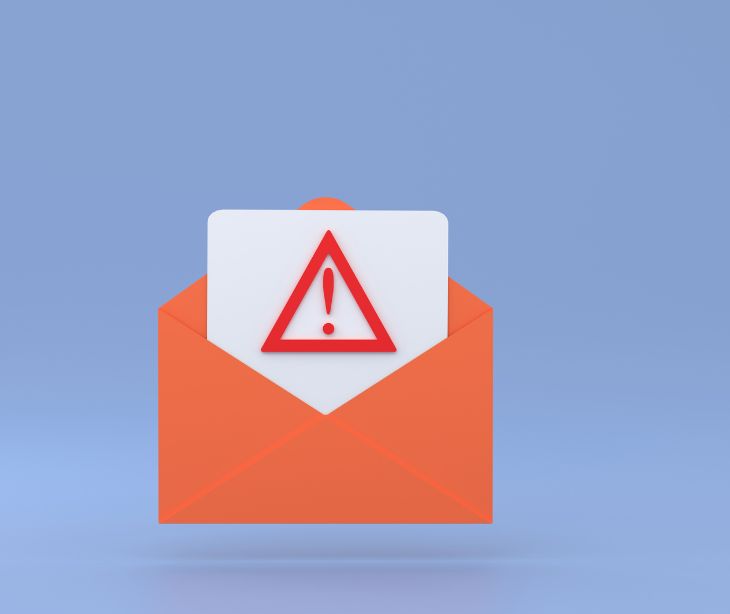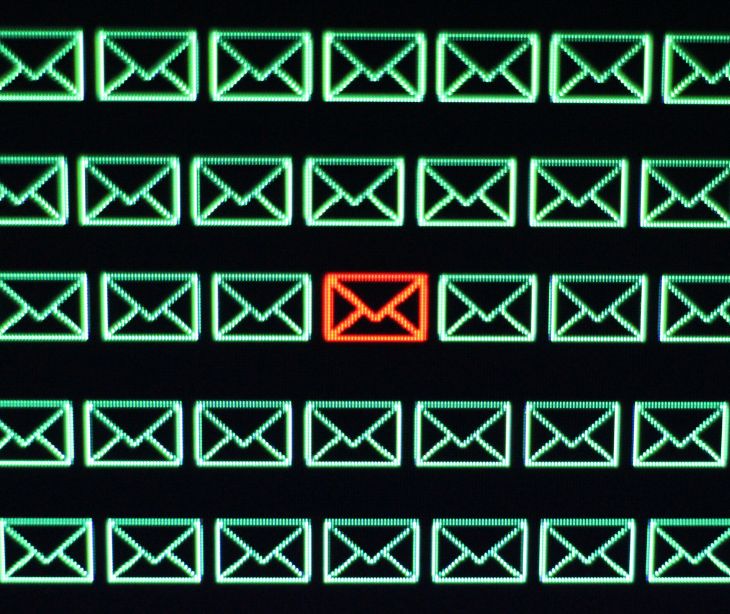
Attachment scanning analyzes email attachments for security threats like malware, ensuring safe communication, and protecting against cyberattacks.
Understanding attachment scanning
Attachment scanning is typically done by email security systems or antivirus software to protect users from opening or downloading harmful files that could contain viruses, malware, ransomware, or other types of malicious code.
Attachment scanning typically involves several steps:
- Scanning for known threats: The attachment is compared against a database of known malware signatures. If a match is found, the attachment is flagged as malicious.
- Heuristic analysis: This involves examining the attachment for suspicious patterns or behaviors that may indicate it is a threat, even if it doesn't match any known signatures.
- Behavioral analysis: Some advanced security systems analyze the behavior of attachments in a sandbox environment to see how they interact with a simulated system. This helps detect previously unknown threats based on their actions.
- Content filtering: Attachment scanning may also involve checking for sensitive or inappropriate content based on predefined rules, such as blocking attachments containing explicit material or confidential information.
Types of attachment scanning
Attachment scanning can be categorized into several types based on the techniques and methodologies used to analyze email attachments for potential security threats. Here are some common types of attachment scanning:
Signature-based scanning
This method involves comparing email attachments' digital signatures, or hash values, against a database of known malware signatures. If a match is found, the attachment is flagged as malicious.
Signature-based scanning effectively detects known threats but may not identify new or customized malware variants.
Heuristic analysis
Heuristic scanning involves examining the characteristics and behavior of email attachments to identify potential threats based on patterns and anomalies. This method does not rely on specific malware signatures. Instead, it looks for suspicious attributes or behaviors that may indicate the presence of malware.
Behavioral analysis
Behavioral scanning involves executing email attachments in a controlled environment, such as a sandbox, to monitor their behavior and interactions with the system.
Content filtering
Content scanning involves inspecting the content of email attachments for sensitive or inappropriate material, such as confidential information or explicit content.
Content filtering rules can be configured to detect specific keywords, file types, or data patterns within attachments.
File type analysis
File type scanning involves identifying the type of file attached to an email and assessing its potential risk. Certain file types, such as executable files (.exe) and script files (.js, .vbs), are often associated with malware and may be subject to more stringent scanning and filtering.
Deep packet inspection (DPI)
DPI is a network security technique that inspects data packets' contents as they pass through a network. In email security, DPI can analyze email attachments in transit, allowing security solutions to detect and block malicious content in real time.
Static analysis
Static analysis examines the code and structure of email attachments without executing them.
Dynamic analysis
Dynamic analysis executes email attachments in a controlled environment to observe their behavior in real time.
Cyberattacks associated with email attachments
- Malware: Malicious attachments are often used as a delivery mechanism for malware, including viruses, ransomware, Trojans, worms, and spyware. Attackers may disguise malware-infected files as legitimate documents, executables, or compressed archives to trick users into opening them, leading to system compromise or data theft.
- Phishing: Phishing attacks frequently leverage email attachments to deceive users into divulging sensitive information or performing malicious actions. Attachments may contain fake login pages, forms, or documents designed to steal credentials, financial information, or personal data through social engineering techniques.
- Exploiting vulnerabilities: Attackers may exploit software vulnerabilities in applications or operating systems by sending malicious attachments containing exploit code. When opened, these attachments can trigger the execution of malicious payloads or the exploitation of security flaws to gain unauthorized access to systems or install malware.
- Fileless malware: Fileless malware attacks may involve malicious attachments containing scripts or macros designed to execute directly in memory without leaving traces on disk.
- Weaponized documents: Threat actors may weaponize documents, such as Microsoft Office files (e.g., Word documents, Excel spreadsheets, PowerPoint presentations), by embedding malicious macros, scripts, or exploits. When users open these documents and enable macros or interact with embedded content, malware can be executed or vulnerabilities exploited to compromise systems.
- Business email compromise (BEC): BEC attacks impersonate legitimate senders, such as company executives or trusted vendors, to trick employees into transferring funds, disclosing sensitive information, or performing unauthorized actions. Attackers may use email attachments, such as fake invoices, purchase orders, or wire transfer requests, to lend credibility to their social engineering tactics.
- Advanced persistent threats (APTs): APT groups often employ sophisticated techniques, including targeted email campaigns with weaponized attachments, to gain persistent access to high-value targets, such as government agencies, corporations, or critical infrastructure. APT attacks may involve customized malware, zero-day exploits, and stealthy evasion tactics to evade detection and maintain long-term espionage operations.
- Document-based exploits: Document-based exploits target vulnerabilities in document viewer applications (e.g., Adobe Reader, Microsoft Office) to execute malicious code when users open infected files. Attackers may embed exploit code in PDF files, Word documents, or other document formats to compromise systems and deploy malware payloads.
In the news
Barracuda researchers analyzed data on attachments scanned by their security tools and found that HTML attachments are the most likely to be malicious, with 21% of all HTML attachments reviewed being hostile.
Xaas Journal emphasized that HTML attachments are a successful method of attacks as they're widely used for legitimate communication purposes, and distinguishing them from harmful ones can be challenging. Hackers commonly camouflage these attachments under the disguise of weekly updates or announcements to deceive recipients into clicking on phishing links. By excluding suspicious links in email content, scammers can evade anti-spam/virus defenses.
Best practices for attachment scanning
- Multi-layered approach: Employ a multi-layered security approach that combines different types of attachment scanning techniques. This approach provides defense-in-depth against a wide range of threats and increases the likelihood of detecting both known and unknown malware.
- Regular updates: Keep signature databases, threat intelligence feeds, and scanning engines up to date to ensure that the attachment scanning system can detect the latest malware variants and security threats.
- Scalability: Choose attachment scanning solutions that can scale to accommodate the volume of email traffic and attachment sizes processed by your organization.
- Performance optimization: Optimize attachment scanning performance to minimize latency and ensure timely delivery of emails to users' inboxes. Performance optimizations may include leveraging distributed scanning architectures, load balancing, caching, and parallel processing to maximize throughput and reduce processing overhead.
- Granular policy configuration: Configure attachment scanning policies with granularity to tailor scanning rules and actions based on the organization's security requirements and risk tolerance. Granular policies allow administrators to define scanning thresholds, exclusion rules, and quarantine actions for different types of attachments and user groups.
- Integration with the email security stack: Integrate attachment scanning solutions seamlessly with other components of the email security stack, such as spam filters, anti-phishing tools, and data loss prevention (DLP) systems. Tight integration enables holistic threat detection and response capabilities across the entire email infrastructure.
- Logging and reporting: Implement comprehensive logging and reporting mechanisms to track attachment scanning activities, monitor performance metrics, and generate audit trails for compliance purposes. Logging and reporting capabilities enable administrators to analyze scanning results, investigate security incidents, and demonstrate regulatory compliance.
- Incident response procedures: Develop incident response procedures and workflows for handling detected threats and security incidents identified through attachment scanning.
- Regular testing and evaluation: Conduct regular testing and evaluation of attachment scanning systems to validate their effectiveness, identify gaps or weaknesses, and fine-tune configuration settings.
See also: HIPAA Compliant Email: The Definitive Guide
FAQs
What types of security threats can attachment scanning detect?
Attachment scanning can detect a wide range of security threats, including malware, viruses, ransomware, phishing attempts, malicious scripts, and other forms of cyber threats embedded within email attachments.
Are there any limitations to attachment scanning?
While attachment scanning is an essential security measure, it may have limitations, such as the inability to detect zero-day threats or sophisticated malware variants, the potential for false positives, the performance impact on email delivery, and the dependency on regular updates and maintenance for effectiveness.
Where does attachment scanning take place?
Attachment scanning can take place at different points within an organization's network infrastructure, including email gateways, endpoint devices, cloud-based email services, secure email gateways, network security appliances, and specialized security tools.
Subscribe to Paubox Weekly
Every Friday we'll bring you the most important news from Paubox. Our aim is to make you smarter, faster.




